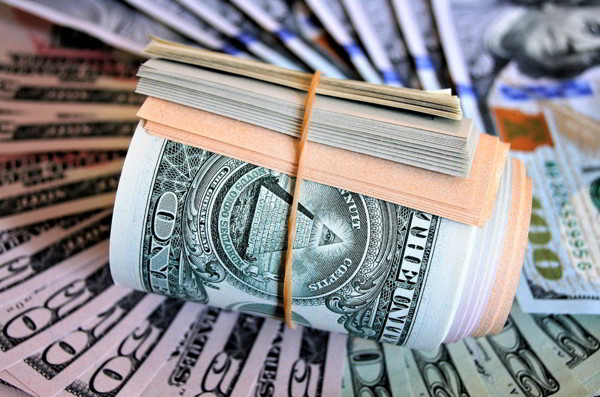Currency Volatility During Economic Uncertainty

The global financial markets have experienced dramatic volatility heading into the second half of 2020. The Dow Jones Industrial Average, S&P 500, and the NASDAQ 100 are up marginally, but overall sentiment is strongly bearish. Across the pond, the FTSE 100 index, the DAX, the CAC 40, the IBEX 35, and Asian markets are largely lackluster, owing to the threat of a second wave of coronavirus infections slamming the world economy.
Already the evidence is mounting as infection rates soar in dozens of US states that have recently reopened for business. Much the same is true across Europe and Asia where concerning trends are unfolding.
For traders and investors, the bigger issue is how best to capitalize off the uncertainty, or at the very least to stabilize their financial portfolios. One of the most effective ways to do this is by following leading financial news and analysis about the best instruments to invest in.
Several prominent options are available, including fixed-interest-bearing investments like bonds, certificates of deposit, and low-interest-bearing savings accounts. The inherent risk of these financial instruments is low, relative to stocks, commodities, indices, and cryptocurrencies. Many traders have also been looking to shore up their portfolios by shifting assets from stocks to commodities like gold and silver.
Safe-haven investments are rare in a bear market, prompting many traders to switch focus to futures markets where short sells are the order of the day. According to Market Beat, the number of short sells have steadily increased heading into June for many companies, including: Wayfare (W), Twitter (TWTR), Eco-Lab (UCL), Moderna (MRNA), Morgan Stanley (MS), and Expedia Group (EXPE), among others.
Major Factors Impacting the USD
Currencies are equally volatile. The USD – the world’s premier reserve currency – remains a hot favorite for traders, despite calls by Jerome Powell of the Federal Reserve Bank to maintain interest rates in the 0 – 0.25% region. At a meeting held by Fed governors on June 10, 2020, the Fed maintained the interest rate at 0.25%, with an eye to supporting a US economic recovery at near-zero rates to promote economic growth, and access to credit.
Experts anticipate that the current interest rates will hold true until 2022, when a turnaround is expected to occur. If the Fed’s projections are accurate, the US economy will shrink by 6.5% in 2020, unemployment rates will increase to 9.3% by the end of the year, and gradually improve through 2021 when they are expected to drop to 6.5%.
The US dollar tends to gain from geopolitical uncertainty. The degree to which this occurs hinges upon a variety of factors, notably:
- Interest rates set by the Fed – the higher the rate, the more interest in buying the USD relative to other currencies. The lower the rate, the lower the interest in buying the USD relative to other currencies.
- Interest rates set by the BOE, BOJ, ECB, and PBOC – interest rates set by other banks such as the Bank of England, Bank of Japan, European Central Bank, and the People’s Bank of China also play a part in determining the relative desirability of the USD. Presently, interest rates in Europe are extremely low relative to the Fed. As it stands, the European interest rate set by the ECB is 0.000 %, the British interest-rate set by the BOE is 0.100%, the Canadian interest-rate set by the BOC is 0.250%, and the Chinese interest-rate set by the PBOC is 3.850%.
- Government debt, recessionary fears, speculative sentiment, and political stability are other factors impacting the USD. Currently, the global economy is in a meltdown, thereby mitigating the impact of a multi trillion dollar stimulus package in the US which would typically weaken demand for the USD.
Presently, the most heavily traded (liquid) currency pairs include the following:
- EUR/USD
- USD/JPY
- GBP/USD
- AUD/USD
- USD/CAD
- USD/CHF
- NZD/USD
- EUR/JPY
- GBP/JPY
- EUR/GBP
- AUD/JPY
- EUR/AUD
*The bold currency pairs have the highest liquidity in the world, particularly the top three (EUR/USD, USD/JPY, and GBP/USD), accounting for approximately 52% of all trading activity in the forex markets.
Clearly, these currencies are showing the highest levels of demand from traders, and each one of them contains the USD. The Japanese yen has long been known as a safe-haven currency particularly when Chinese markets are struggling.
The GBP (British pound) is always a top contender, owing to the strength, desirability, and stability of the Queen’s currency. The pound is being dragged down by the lack of progress on Brexit -related initiatives, and the current grim outlook for the UK economy.
On the plus side for the pound, the prognosis for economic growth and recovery is bleak across Europe, and the rest of the world. The GBP/EUR pair currently hovers around the 1.10/1.11 level, while the GBP/USD is hovering around the 1.25 level, slightly off its highs recorded in December 2019 of 1.33 and again in March 2020 of 1.31.
In times of high volatility, the USD is proving to be the preferred currency for traders, alongside the JPY and GBP.

